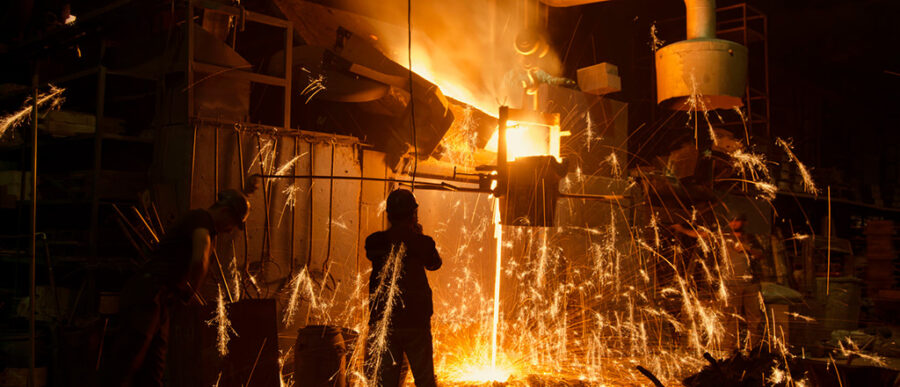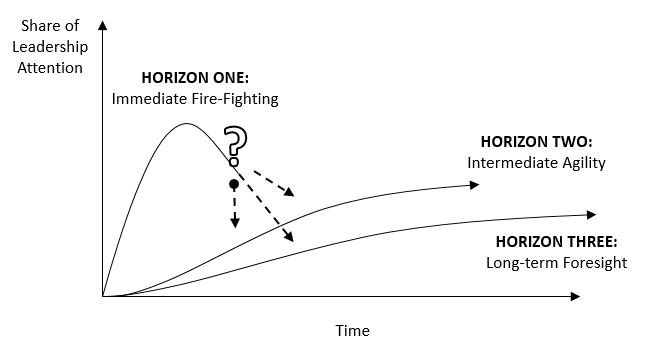Most companies around the world were blindsided by the coronavirus pandemic and the economic slump that has followed. The crisis has revealed the vulnerability of companies in industries ranging from airlines to autos. Still, vigilant companies that combine dynamic capabilities with agile leadership are poised to emerge stronger from the crisis. That is the view of the co-authors of this opinion piece, George Day, Wharton emeritus professor and a senior fellow of the Mack Institute of Innovation Management, and Paul Schoemaker, who is also a senior fellow of the Mack Institute and served on the faculties of the University of Chicago and Wharton in addition to having built various companies in the U.S. and Europe. Day and Schoemaker recently published their book, See Sooner, Act Faster: How Vigilant Leaders Thrive in an Era of Digital Turbulence.
Few firms were ready for the black swan named COVID-19. The ferocity of this virus’s attack surprised even the most vigilant of organizations. But some firms will be better able to survive and emerge stronger when the chaos and uncertainty from virus-induced lock-downs, economic slumps and frozen markets eventually subside. These firms will benefit from having mastered dynamic capabilities with agile leadership, which are the hallmarks of vigilant organizations. They can absorb the shocks of crises, thanks to bigger cash buffers and superior market positions, and then will capitalize on their vigilance advantages to pull further ahead.
Vigilant organizations are not only better in seeing around corners, with a readiness to act decisively when the time is right, but they also use that special ability to get stronger even after having been blindsided. They avoid the pitfalls of wishful thinking, willful blindness, paralysis, or myopia when black or grey swans surround them. Vigilant organizations will manage the current “Coronachaos” by following three navigation principles:
Navigation Principle One: They will pay attention to each of the unfolding horizons of turbulence. While they are fire-fighting in the present, by looking after their people, taking care of suppliers and customers, and watching their cash, they are also looking ahead. While Coronachaos is all about the here and now of restoring disrupted supply chains and cutting fixed costs, some attention must be given to the impending second horizon, to be ready to pivot when the time is right. One company that is positioned for the next act is Intuit by offering a business continuity plan to their software customers. Another is Netflix which lowered the resolution of its streaming service to ease the load on data networks while retaining customers worldwide.
This requires an organization that is inherently agile. Some of the leaderships’ attention will also be given to longer-term foresight to see what is coming over horizon three. The digital transformation of industries will not pause and may indeed accentuate or accelerate all the other systemic changes in global business to come. Fighting the current pandemic is giving a major boost to digital monitoring and mitigation, with companies operating virtually as much as possible. Thanks to lower costs of capital and higher margins, vigilant organizations can invest in the opportunities they find, even as other firms are forced to cut back. Governments may even encourage them to take over foundering firms and relax antitrust concerns to protect jobs.
Navigation Principle Two: Vigilant organizations will have nurtured dynamic capabilities that foster agility. Firms at the bleeding edge of Coronachaos are moving from a comfortable and known risk- environment (where decision outcomes can be specified, and probabilities calculated) toward the deep uncertainty of unknown unknowns. Familiar and predictable environments can usually be navigated with ordinary capabilities for the proficient execution of current processes, such as supply chain management, executing routine transactions, and delivering reliable performance. To navigate deep uncertainty, in contrast, requires a more vigilant toolkit customized around three dynamic capabilities: sensing change sooner than rivals, seizing opportunities more effectively, and transforming the organization as needed to stay ahead.
With the right set of capabilities, an organization becomes agile when turbulence is high. Agility here means being able to move quickly and adroitly to shift resources to higher value activities sooner than rivals. For example, agile strategies are activated when a scrum is formed to tackle an emerging opportunity or address an immediate threat. A small team or scrum of three to nine people is quickly assembled with all the diverse skills needed to carry out the initiative. They essentially function as self-managing teams, following a transparent process, using design thinking methods to develop and test possible solutions and learn quickly. These features are the antithesis of cumbersome, top-down processes with repetitive meetings, rigid command structures and other impediments to action. Thus, vigilant firms from Amazon to Unilever already have small foresight teams to help their rapid response teams cope with the crisis by providing high levels of situational awareness. The aim is to maintain fast access to the front lines where the crisis is being fought, and the weak signals from horizons two and even three are beginning to emerge.
Navigation Principle Three: Vigilant organizations have a different perspective on speed that emphasizes being ready to act when the time is right. In the maelstrom of Coronachaos, speed is an especially useful creed. Delays usually narrow the range of possible actions if someone else gets to them sooner. Seeing sooner also gives a vigilant firm more time to create strategic options to be exercised. By devoting some attention to horizon three more vigilant firms will have started the due diligence on weaker rivals to acquire, they will have rethought how decisions are made by learning from the experience of enforced online meetings, and begun considering which start-ups to scoop up.
Just because the clock of business is whirring faster doesn’t mean that leaders must operate in haste. ‘Acting faster’ than rivals is about being ready for action when needed, and this starts with early detection and learning through probing questions and exploratory forays. Only after enough clarity has been achieved about key issues can leaders orchestrate better organizational preparedness. The aim of seeing sooner is to have more degrees of freedom later, when quick or bold actions are called for, without being boxed in by rivals’ moves. Most managers prefer to act on their own terms rather than be forced to react.
Vigilant versus Vulnerable Organizations
Vigilance is a collective capability characterized by curiosity, candor and openness to diverse inputs. It is the antithesis of myopia, siloed thinking and being held captive by outdated conventional wisdom.
Our study of 118 firms found that two drivers distinguish vigilant from vulnerable organizations. The first is a leadership team that demonstrates a strong, continuing commitment to vigilance activities. The second driver is the investment of significant time and energy to building foresight capabilities. These primary drivers are reinforced in turn by two more drivers about how strategies are made and how accountability and coordination are achieved.
Nietzsche wrote, “That which does not kill us, makes us stronger” and this should be the clarion call for vigilant organizations today.
The resilience of vigilant organization in the face of Coronachaos comes from having the four drivers already in place. Here are some of the ways these vigilant organizations behave:
- Leadership commitment to vigilance is demonstrated by an openness to weak signals from diverse sources, encouraging everyone to explore issues outside their functional purview, and thinking outside the box. The leadership team focuses externally and nurtures curiosity throughout the entire organization. They play the long game.
- Investments in foresight are made systematically, perhaps through centralized foresight units for scanning and developing likely scenarios to understand more deeply the key uncertainties. Before these uncertainties are resolved they have also invested in a portfolio of real options, so they are prepared to act faster.
- Strategy making processes are flexible and adaptive by adopting ‘outside-in’ and ‘future-back’ approaches. By thinking from the outside-in they have deeper insights and empathy for their struggling customers and suppliers. They feel their pain! Future-back thinking asks what it takes to win in horizons two and three, and how to provide pain relief.
- Coordination and accountability mechanisms in vigilant firms are already in place, and information is shared readily. By redressing uncoordinated activities and haphazard initiatives the leadership team reduces decision-making ambiguity and creates the right conditions for continued vigilance.
When leadership can look past the immediate imperatives of firefighting and stabilizing the organization, they can pull harder on these four levers to act on horizons two and three. As Nietzsche wrote, “That which does not kill us, makes us stronger” and this should be the clarion call for vigilant organizations today. In ordinary times, vigilance is mostly about scanning the periphery and better handling curve balls that may come your way. But in these extraordinary times, when black swans and a tiny virus pull everyone down in tandem around the world, vigilance is also about reinvention and orchestrating greater resilience for the next time around.
Many firms, however, will lack the vision, leadership and dynamic capabilities to use the crisis to become stronger, being exhausted from their fire-fighting efforts. These vulnerable firms will have stretched their balance sheets and become too feeble to cope and regroup. Their leaders will be forced to yield ground to their better resourced and more vigilant rivals just to survive and won’t be able to use the Coronachaos to emerge stronger. While the more vigilant firms will have gained an advantage, they must work tirelessly to stay alert to what is next coming over the horizon. They appreciate that tumult and chaos bring big challenges as well as opportunities, and position their organizations to end up stronger — like tempered steel — when the crisis subsides. Instead of remaining rigid like full-annealed steel, they want to accommodate whatever the next crisis brings.




